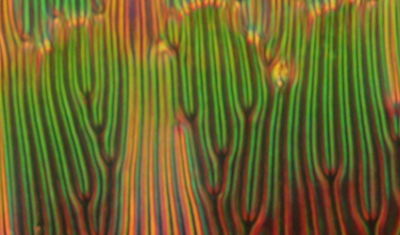A recent study by Peter Medle Rupnik, Ema Hanžel, Matija Lovšin, Natan Osterman, Nerea Sebastian and Alenka Mertelj from the Jožef Stefan Institute and Faculty of Mathematics and Physics, University of Ljubljana, and colleagues from the University of Leeds published in Advanced Science has clarified the dominant mechanism responsible for antiferroelectric order in nematic liquids. This work contributes to the understanding of the intermediate phase that is observed between apolar and ferroelectric nematic states, and which exhibit a distinct antiferroelectric response to electric fields.
The research addresses the ongoing debate regarding the origin of this order, focusing on flexoelectric effects and electrostatics as potential mechanisms. By systematically varying ion concentrations in ferroelectric nematic materials, the study demonstrates that flexoelectric coupling—between electric polarization and the splay deformation of the nematic director—plays the primary role in the emergence of antiferroelectric order. Experimental observations show that increasing ion concentration extends the temperature range over which the antiferroelectric phase exists. Polarizing optical microscopy, second harmonic generation microscopy, and interferometry were used to characterize the modulated, two-dimensional splayed structure and confirm its antiferroelectric nature. Additionally, the researchers extended the existing theoretical model by incorporating the electrostatic contributions of ions. The revised model aligns qualitatively with experimental results, reproducing the phase diagram and the temperature-dependent evolution of the observed structure’s modulation period.
This study provides important insights into the behaviour of ferroelectric nematic liquids and their phase transitions, offering a refined framework for future investigations in the field.
The new article, published in Advanced Science can be found here: https://doi.org/10.1002/advs.202414818

